Befana Day and Caramelle Pasta Recipe
Long term readers of my blog know that every January 6th, we celebrate Befana Day even though we are not (1) Italian or (2) Catholic. The short version of the story is that I picked up the tradition one winter when I was in Florence, Italy. The longer version includes a convoluted story of very loud sex partaken by other hotel guests staying at the same palazzo, and a conversation with the owner’s daughter which ended with her announcing that she needed to go fill her child’s shoes with candy. A lot came between listening to the people having sex and the candy in the shoes, but none of it is very important. The bare facts you need to know is that I’ve been celebrating Befana Day since 1994ish even though I am not Italian or Catholic.
Befana Day — also known as Epiphany — falls every January 6th. On the night of January 5th, the witch Befana flies through the air, delivering toys and candy to children who believe in her. She comes to our house because we believe in her wholeheartedly. The twins draw pictures of shoes and set them outside their rooms (since we all agreed that actually putting the candy in their mangy shoes was twenty kinds of gross). In the morning, they open their gift before school and at night, we eat a meal of potato caramelle (the recipe will follow below).
I started celebrating this holiday back when I was in graduate school, before I knew anything about infertility. So it’s sort of strange that I would fall in love with this holiday where infertility and loss feature so prominently in the story. This is the story the owner’s daughter told us about Befana:
Once there was a woman named Befana. She was cooking and cleaning and just trying to get through her day when three men came to her house and asked directions to Bethlehem. They told her that a baby had been born who was G-d in human form and they asked if she wanted to come with them to see the new baby. Befana said no because she thought she had already used up too much time giving them directions and she went back to her cleaning and cooking.
A little while later, she thought about how she had just missed this amazing opportunity because she had been so focused on this end goal of having the house clean and dinner cooked. She ran out of the house with her broom and apron and tried to find the three travelers (who were, of course, the three wise men). Befana still goes from house to house to this day, trying to find the baby and leaves gifts and candy at each house she visits.
She also gave a second version of the story that hits much closer to home:
Befana was an old woman who was finally a mother after many many years of infertility. The king learned that a baby would be born who would be G-d in human form and he ordered all baby boys to be murdered. Her son was killed in front of her but in her grief, she refused to accept the loss. Instead, she piled together all the things she had made for him, all the hope she had infused into these tangible items while she waited for him, and went out wandering around the world with this sack on her back.
One night, she came to a manger and in her grief, she thought she had found her son who she believed to be lost rather than dead. She placed these items in the manger and the baby’s family saw how deeply this woman grieved from not having her child that they named her Befana, the giver of gifts and gave her a special blessing. One night out of the year, she is a mother to all of the children in the world. On that night, she travels from home to home, leaving presents for children, to remind them how much they are wanted.
I’m not sure how much I love this second version of the story which plays into all the stereotypes of crazy grieving mothers, but there is a part of me that connects with Befana and her grief. I imagine the modern-day Befana as a thirty-something woman, making her toys in the middle of the night when no one can see her crying. She holds it together during the day, possibly working an office job so no one suspects that she really has magical powers, and at night, she just sits with her hope, making things for children until the day she can parent her own.
Interestingly, in poking around the Internet about the history of Befana, I came across an article that mentioned that she comes from the Roman goddess Strina or Strenua. And in looking up information on this Sabine goddess, I discovered that she is the embodiment of strength and endurance. Which — I think — says a lot about the women in this community.
So.
Caramelle pasta is also a Befana Day tradition (at least, according to the hotel owner’s daughter — I’m not Italian, so if I’m getting all of this completely wrong, it’s her fault). The shape is meant to resemble the pieces of candy that Befana leaves. We stuff ours with a creamy potato and balsamic-glazed onion mixture. I make them ahead of time and freeze them, and serve the meal with a salad. You do need a hand-cranked pasta machine to make these, but considering they cost about $20, I think it’s one of those things every kitchen should have.
Fresh Pasta
Ingredients:
3 1/2 cups of all-purpose flour
5 eggs
pinch of salt
Place the flour in a huge bowl (I like to knead inside the bowl in order to minimize the mess). Make a well in the center. Crack the eggs into the middle of the well and add a pinch of salt. Using your hands, knead the dough together until it is smooth. You will possibly need to add a bit of water or a bit of flour in order to bring it to a satiny finish. Once you have a smooth ball of dough, divide it into 4 parts, wrap each with plastic wrap, and let it rest for an hour while you make the filling.
Caramelle Filling
Ingredients:
2 medium potatoes
1 onion
2 tbsp of balsamic vinegar
1 tbsp of olive oil
a few sprigs of fresh thyme
2 tbsp butter
1/2 cup of Parmesan cheese
Preheat the oven to 400 degrees.
Wash and prick the potatoes and set them on a foil covered baking sheet. Create a small nest out of a second piece of foil and place inside the onion in 4 quarters. Cover the onion sections with the thyme and balsamic vinegar and a splash of olive oil. Close that foil nest and place on the baking sheet too. Put the whole thing in the oven for 45 minutes. The potatoes should be soft when you stick a fork in them to test them.
Allow it to cool a bit and then peel the potatoes (the skin will come right off). Place the drained onions (discard most of the thyme), the potatoes, butter, and cheese in a cuisinart. Puree until smooth. The filling will look like this.
Caramelle Pasta
To put the pasta together, dust the first section of pasta dough with some flour. Run it through the machine on the widest setting (usually 7). Pass it through again two settings down (usually 5), and finally do it a third time at a low setting (I always use 3). Using a square cookie cutter, punch out as many squares as possible.
I use the leftover dough a second time (running it through the three settings), but then toss the rest because it becomes too tough. Fill the squares with a dime-sized amount of filling.
Fold the dough over the filling and continue to roll it until it looks like a tube. Then, pinch the two ends closed. This also works out the air so the pasta will stay closed during the cooking process.
I lay out the caramelle on parchment paper and flash freeze, finally transferring them to a tupperware container.
They cook in about 5 minutes in boiling water. (You’ll need to stay close by and try one or two because the cooking time varies depending on whether they are fresh or frozen.) I serve with butter and a bit of additional cheese.
Buon appetito!
A little tradition you can take and make your own if it speaks to you as it did me. If making your own pasta feels like too much work this year, feel free to still honour Befana with a slice of pizza or a can of Spaghetti-os. I use the holiday to say a wish for myself and for the entirely ALI community. Maybe it’s just me, but sometimes you just need to embrace these outlets.




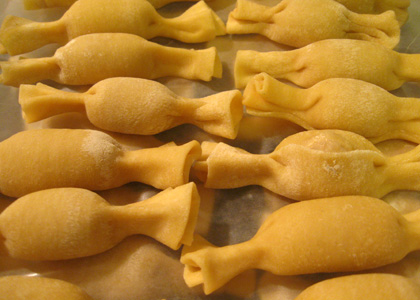
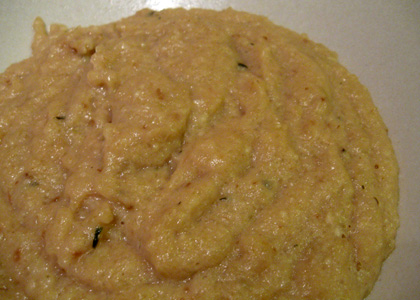
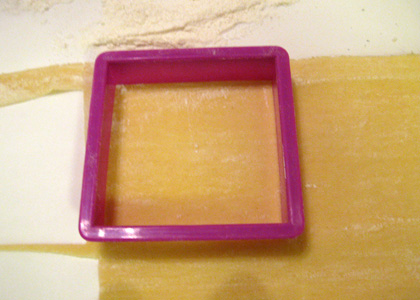
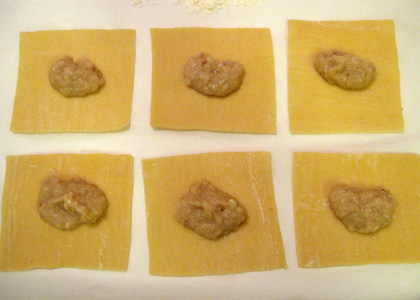
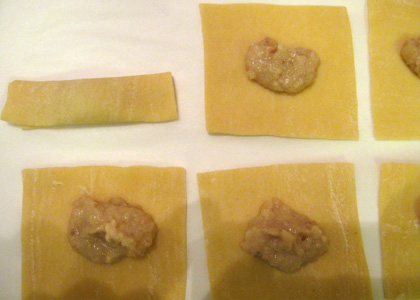
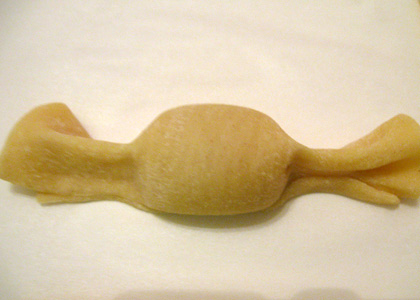
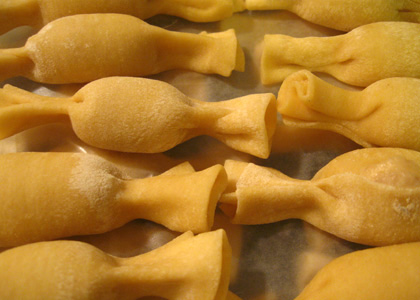

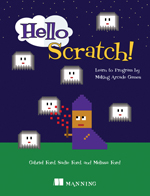

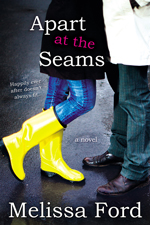
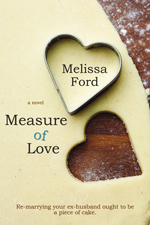
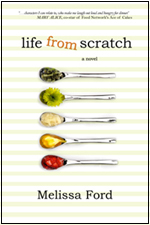
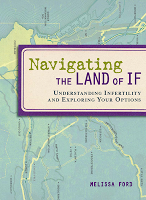


23 comments
Thank you Mel, for your creativity and the love you put into the words you share. I had heard this story before but now it really means something to me.
Thank you also for your blurb on my Creme entry. It was so thoughtful and made me reconnect with my loss in a new more positive way.
I love homemade pasta, but man, it’s a lot of work. However, I find myself with a surplus of eggs and flour, so maybe I’ll make some…
Happy Befana day!
These look & sound a lot like Ukrainian/Polish perogies — i.e., delicious. ; ) A rose by another name…!
Ok…that second version of the story brought tears to my eyes, which isn’t exactly hard these days.
My mother is bestest friends with a couple who are both Italian immigrants and Catholic, and they celebrate with the candy in the shoes and all that. Her friend made a bag w a drawstring that lines the shoe for the candy so it never touches the icky shoe, and the bag can be washed. Also, they put out their best dress go to Mass shoes that hardly see any wear…so not so gunky. Would you want to put candy in someone’s stinky sneakers? It wouldn’t work for me, we don’t have go-to-church-clothes either.
I love this, all of it – the tradition, the tale, the pasta. Can I come for dinner?
As an Italian Catholic who was looking for something to make for dinner on Friday, I thank you wholeheartedly! I’ve never heard of this before! Of course, my grandmother’s birthday was Jan 6, and she was probably so done with our gift getting she just wanted her own day on the 6th! We do the candy in the shoes for St. Nicholas day which is Dec 6. (We put the candy ON the shoes rather than in them for the same gross factor. We all have small feet so it works!)
We celebrate Epiphany, but not being Catholic or Italian I have never heard of that before. What a nice tradition.
I love it!
That’s wonderful Mel. We are celebrating right alongside you (in spirit, at least). I never associated La Befana with infertility before (I was probably too busy associating her with the candy and gifts) but, thanks to you, I now have a new perspective on this holiday.
I too had tears in my eyes reading the 2nd version.
Thank you for a proper meaning of Epiphany (loppiainen in Finnish). It’s a holiday here in Finland, (three day weekend, here I come!) but I’ve never had an idea of what it is, except for the explanation I look up in Wiki EVERY year. Maybe I can get hubby to have pizza with me then, as I know I’ll be too lazy to make fresh pasta. 🙂
Yum! Tiny Italian knishes! I’ll have to try them. I’ve been meaning to make my own pasta for ages.
I’ve heard about the candy in the shoes but never knew the story. Thanks for sharing and enjoy your treats! 🙂
Thanks for sharing your recipe, Mel. That might just be the excuse I need to finally get a pasta maker. I’ve been putting it off, hoping someone might drop a Kitchen Aid mixer in my lap (I know, HAHA). And then I could just get a pasta attachement for that. But I’ve been seeing to many fun recipes lately to wait for that.
MWAH!
Not Italian, not Catholic, but how could you not love a day that celebrates candy and pasta?! And I love that you celebrate it with your kids – what a lovely tradition. Thanks for the recipe – I am definitely going to try it.
Simply awesome.
My father used to celebrate Three Kings Day; in fact, we’d always keep a gift from Christmas to give to him then. But I never got candy in my shoes. 😉
Last year when the Christmas decorations started to appear in shops here in Albania, I noticed the occasional witch with a broom mixed in with reindeer and snowmen, and I thought huh – a leftover Halloween decoration? But they don’t really do Halloween here (such a very American tradition), and it wasn’t until I read your post last year on Befana that I put two and two together. So thanks to you I got in insight into Albanian culture (via emigrants working in Italy, I’m sure). I love the second version of the story even though it makes me cry.
One day I will feel overly ambitious and make that. I don’t think that day is today.
Your noodles look really nice. I read about these in “The Geometry of Pasta” the recipes have slight variations. The long story seems overly estrogen driven, as do the follow-up comments.
I appreciate your cooking info. Happy New Year
They cost $20? Why have I only ever seen $200+ ones? I covet a hand-cranked pasta machine but whenever shopping for one have never been able to justify the expense.
Bea
Wow, those look really cool!
Wow.. now I know what the amazing chocolate shoes where in the shop windows here (Genova, Italy). They were the loveliest chocolate forms, filled with candies. Sounds like you have made a very special tradition there. I love it!
Yeah… I don’t know how I feel about either of the Befuna stories, but I like the tradition of a little small gifts at the start of the year for children. 4 of the most important children in my life all have birthdays mid January. Every year I am that 30 something person after work making up something to mark their birthdays in some special way. When I am living close by, I give the twins ‘special birthday’ outing coupons — which they call ‘separate’ days because they get a day without their twin. The other kids I tend to take out for a day together without their parents. Then go home to my empty house and wonder what traditions I will/would do with my kids if/when I have them.
I love this story and, though I am both Italian and Catholic, somehow have never heard it before. It reminds me a little bit of myself, before my daughter, crying to myself as I bought gifts and treats for all the special children in my life, even as I could not have my own. This may be something we start next year with D. Thanks!
seriously every year I read this.. then forget the story.. then read it again through blog links. This will likely be my last year in Italy. To me the 6th represents the day the city comes and takes down center piazza’s Christmas tree… which is one of my most favorite things about living in this city that has brought me such intense days. But each December I visit the tree every night for its simple joys… and now that is gone too. Hope you had a lovely Sunday with candy in paper shoes!